
How to Use 5v Relay: Examples, Pinouts, and Specs
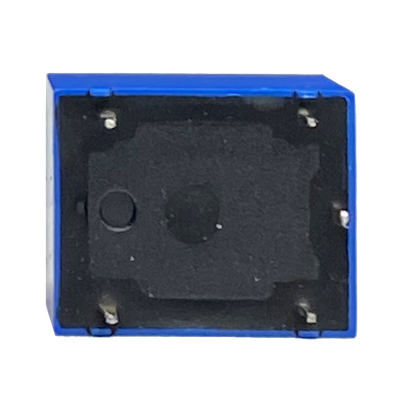
 Design with 5v Relay in Cirkit Designer
Design with 5v Relay in Cirkit DesignerIntroduction
The 5V Relay by Ashish Tech Guruji (Part ID: SPST) is an electromechanical switch designed to control high-voltage or high-current devices using a low-voltage (5V) control signal. It operates by energizing a coil, which moves an armature to open or close the relay's contacts. This allows for safe and efficient control of devices such as motors, lights, and home appliances.
Explore Projects Built with 5v Relay
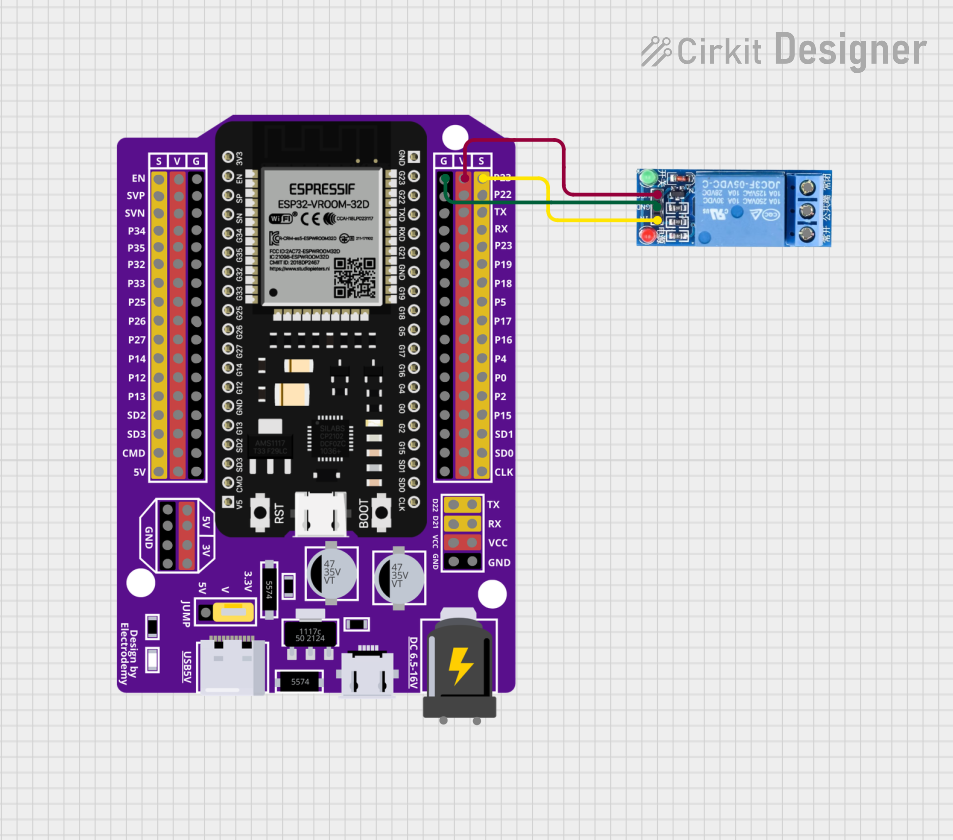
 Open Project in Cirkit Designer
Open Project in Cirkit Designer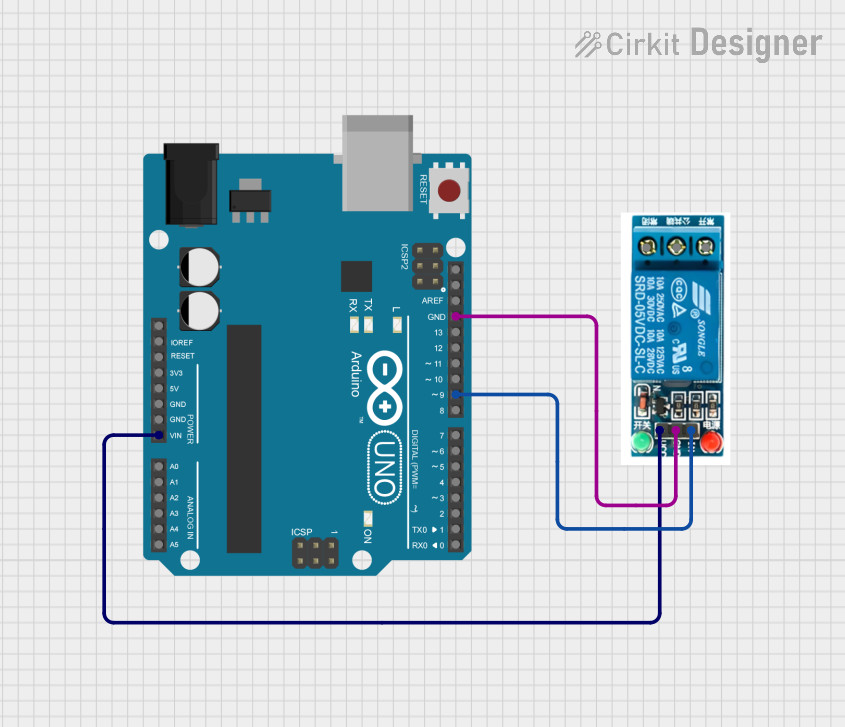
 Open Project in Cirkit Designer
Open Project in Cirkit Designer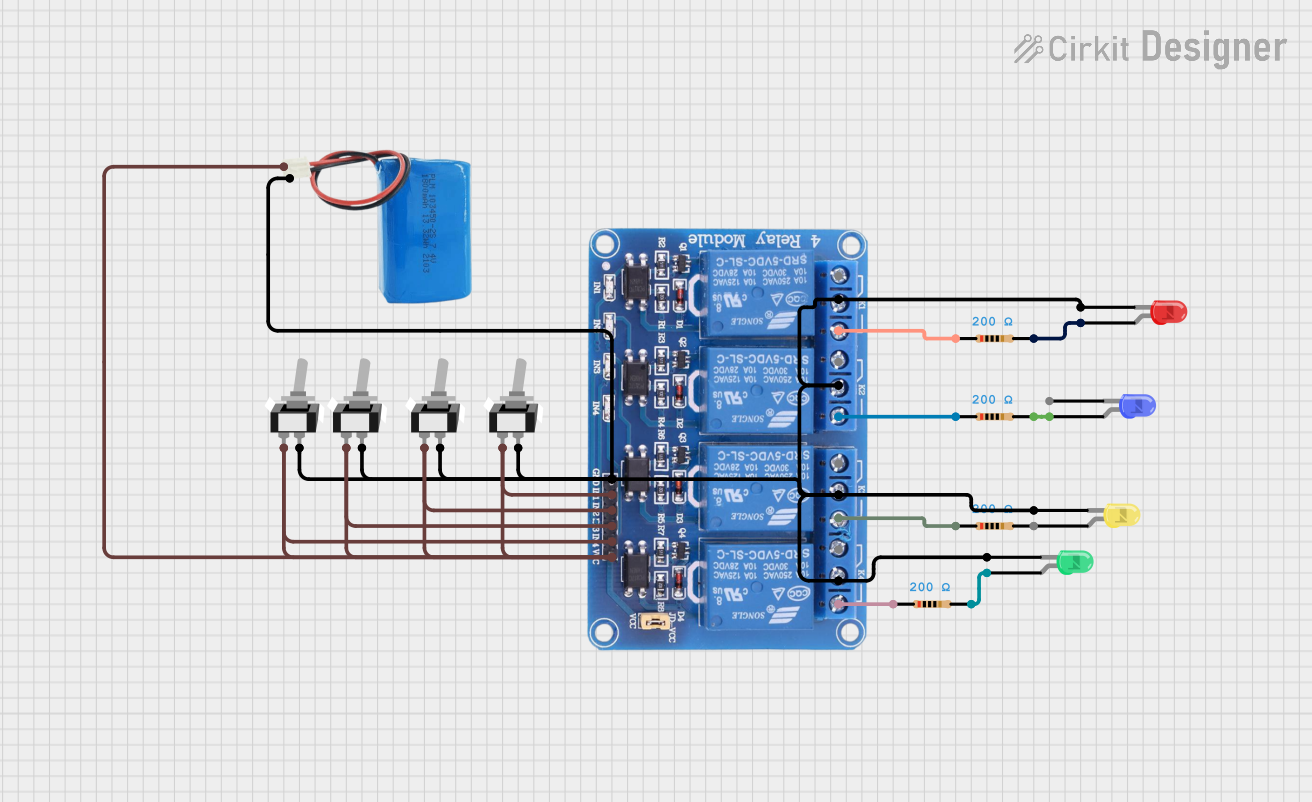
 Open Project in Cirkit Designer
Open Project in Cirkit Designer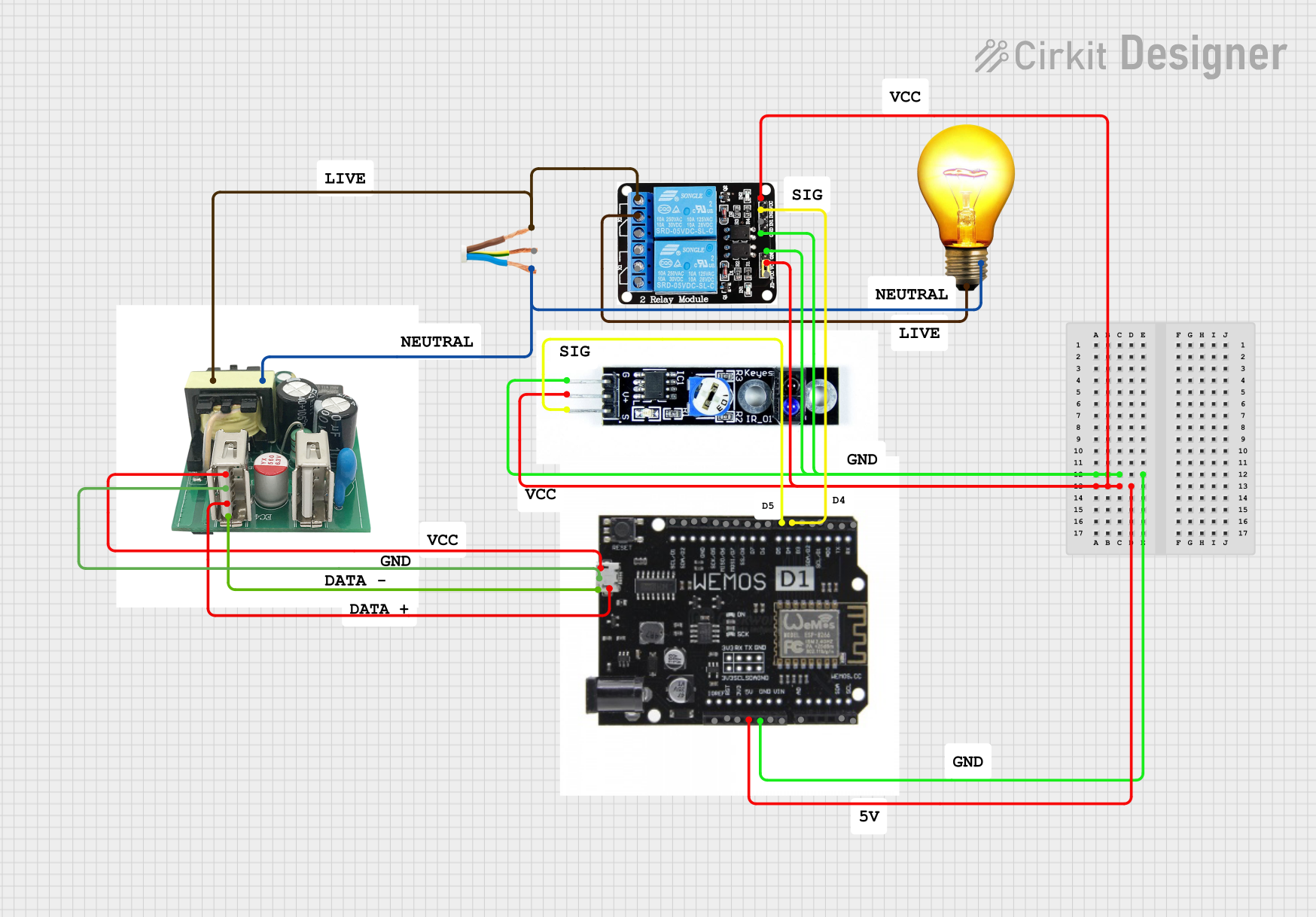
 Open Project in Cirkit Designer
Open Project in Cirkit DesignerExplore Projects Built with 5v Relay

 Open Project in Cirkit Designer
Open Project in Cirkit Designer
 Open Project in Cirkit Designer
Open Project in Cirkit Designer
 Open Project in Cirkit Designer
Open Project in Cirkit Designer
 Open Project in Cirkit Designer
Open Project in Cirkit DesignerCommon Applications and Use Cases
- Home automation systems (e.g., controlling lights or fans)
- Industrial equipment control
- Motor and pump control
- IoT projects for switching high-power devices
- Arduino and microcontroller-based projects
Technical Specifications
The following table outlines the key technical details of the 5V Relay:
| Parameter | Value |
|---|---|
| Manufacturer | Ashish Tech Guruji |
| Part ID | SPST |
| Operating Voltage | 5V DC |
| Trigger Voltage | 3.3V to 5V DC |
| Maximum Switching Voltage | 250V AC / 30V DC |
| Maximum Switching Current | 10A |
| Coil Resistance | ~70Ω |
| Contact Type | SPST (Single Pole Single Throw) |
| Isolation | Optically isolated (if used with a driver module) |
| Dimensions | 19mm x 15mm x 15mm |
| Weight | ~10g |
Pin Configuration and Descriptions
The 5V Relay typically has 5 pins. The table below describes each pin:
| Pin Name | Description |
|---|---|
| VCC | Connects to the 5V power supply to energize the relay coil. |
| GND | Ground connection for the relay. |
| IN | Control signal input (3.3V to 5V logic level). |
| COM | Common terminal for the relay's switching circuit. |
| NO | Normally Open terminal. Connect the load here if you want it to be OFF by default. |
| NC | Normally Closed terminal. Connect the load here if you want it to be ON by default. |
Note: Some relay modules may not expose the NC terminal, depending on the design.
Usage Instructions
How to Use the 5V Relay in a Circuit
Power the Relay:
- Connect the VCC pin to a 5V DC power source.
- Connect the GND pin to the ground of the power source.
Control Signal:
- Connect the IN pin to a microcontroller (e.g., Arduino) or a 5V logic signal.
- When the IN pin receives a HIGH signal (5V), the relay will activate, switching the contacts.
Load Connection:
- Connect the device you want to control (e.g., a light bulb or motor) to the COM and NO (or NC) terminals.
- Use NO if you want the device to be OFF by default and turn ON when the relay is activated.
- Use NC if you want the device to be ON by default and turn OFF when the relay is activated.
Isolation:
- If using a relay module with an optocoupler, ensure proper isolation between the control and load circuits.
Important Considerations and Best Practices
- Diode Protection: Always use a flyback diode across the relay coil to prevent voltage spikes when the relay is deactivated.
- Power Ratings: Ensure the load's voltage and current do not exceed the relay's maximum ratings (250V AC / 30V DC, 10A).
- External Power Supply: For high-current loads, use an external power supply to power the load circuit.
- Safety: Avoid touching the relay or load connections when the circuit is powered to prevent electric shock.
Example: Using the 5V Relay with an Arduino UNO
Below is an example of how to control a 5V relay using an Arduino UNO:
// Example: Controlling a 5V Relay with Arduino UNO
// This code turns a relay ON for 2 seconds, then OFF for 2 seconds repeatedly.
#define RELAY_PIN 7 // Define the pin connected to the relay's IN pin
void setup() {
pinMode(RELAY_PIN, OUTPUT); // Set the relay pin as an output
digitalWrite(RELAY_PIN, LOW); // Ensure the relay is OFF initially
}
void loop() {
digitalWrite(RELAY_PIN, HIGH); // Turn the relay ON
delay(2000); // Wait for 2 seconds
digitalWrite(RELAY_PIN, LOW); // Turn the relay OFF
delay(2000); // Wait for 2 seconds
}
Note: Ensure the relay module is connected to the Arduino's 5V and GND pins for proper operation.
Troubleshooting and FAQs
Common Issues and Solutions
Relay Not Activating:
- Cause: Insufficient control signal voltage.
- Solution: Ensure the IN pin receives a voltage between 3.3V and 5V.
Load Not Switching:
- Cause: Incorrect wiring of the load to the COM and NO/NC terminals.
- Solution: Double-check the load connections and ensure the relay is properly powered.
Relay Buzzing Noise:
- Cause: Insufficient current to the relay coil.
- Solution: Use a power supply capable of providing sufficient current (at least 70mA).
Microcontroller Resetting:
- Cause: Voltage spikes from the relay coil affecting the microcontroller.
- Solution: Add a flyback diode across the relay coil and use a separate power supply for the relay.
FAQs
Q1: Can I use the 5V relay with a 3.3V microcontroller?
A1: Yes, the relay can be triggered with a 3.3V control signal, but ensure the relay module supports 3.3V logic levels.
Q2: Can the relay handle AC and DC loads?
A2: Yes, the relay can switch both AC (up to 250V) and DC (up to 30V) loads, provided the current does not exceed 10A.
Q3: Do I need a relay driver circuit?
A3: If your microcontroller cannot supply sufficient current to the relay coil, use a transistor or relay driver module.
Q4: Is the relay safe for high-power applications?
A4: Yes, but ensure proper insulation and follow safety guidelines when working with high voltages.
By following this documentation, you can effectively integrate the 5V Relay (SPST) into your projects for reliable and efficient control of high-power devices.